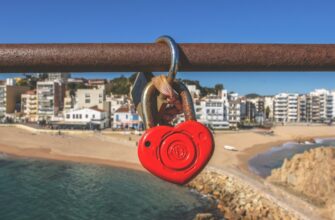# How to Encrypt Your Crypto Wallet Anonymously: Beginner’s Security Guide
In today’s digital age, encrypting your cryptocurrency wallet isn’t just smart—it’s essential for protecting your assets from hackers and surveillance. For beginners, achieving true anonymity while securing your crypto might seem daunting, but it’s simpler than you think. This guide breaks down exactly how to encrypt your wallet anonymously, keeping your digital wealth private and secure without technical jargon.
## Why Anonymity Matters in Crypto Encryption
Blockchain transactions are pseudonymous, not anonymous. Your wallet address can be traced back to your identity through:
– Exchange KYC (Know Your Customer) records
– IP address leaks during transactions
– Metadata from connected services
Encrypting anonymously adds a critical layer of privacy, preventing:
1. Targeted hacking attempts
2. Government or corporate surveillance
3. Physical theft risks from location tracking
4. Personal data breaches via wallet associations
## Step-by-Step: Encrypting Your Wallet Anonymously
### Step 1: Choose a Privacy-Focused Wallet
Select wallets with built-in encryption and no mandatory KYC:
– **Exodus** (Desktop/Mobile)
– **Electrum** (Bitcoin-only)
– **Wasabi Wallet** (CoinJoin integration)
– Avoid web-based wallets requiring personal verification
### Step 2: Install Securely
– Download ONLY from official websites (check SSL certificates)
– Verify checksums before installation
– Use a clean device without personal accounts logged in
### Step 3: Create Your Wallet Anonymously
– Never use real names, emails, or phone numbers
– Generate wallet offline if possible
– Disable auto-sync features that leak IP data
### Step 4: Set Strong Encryption
1. Navigate to security settings
2. Choose “Encrypt Wallet” or similar
3. Create a 12+ character password with:
– Upper/lowercase letters
– Numbers
– Symbols (e.g., !@#$%)
– No dictionary words or personal info
4. Confirm password
### Step 5: Backup Anonymously
– Write recovery phrase on paper—never digitally
– Store in fireproof/waterproof container
– Avoid cloud backups or photos
## Maintaining Anonymity: Pro Tips
– **Always use a VPN** (e.g., Mullvad or ProtonVPN) when accessing your wallet
– **Never reuse passwords** across platforms
– **Enable 2FA** on exchanges (but not linked to personal phone)
– **Use Tor Browser** for blockchain explorers
– **Regularly update wallet software** to patch vulnerabilities
## Critical Mistakes to Avoid
– ⚠️ Using weak passwords like “password123”
– ⚠️ Storing recovery phrases on phones/emails
– ⚠️ Ignoring wallet software updates
– ⚠️ Transacting over public Wi-Fi without VPN
– ⚠️ Linking wallet to social media or KYC exchanges
## Frequently Asked Questions (FAQ)
### Is anonymous wallet encryption legal?
Yes, encrypting wallets is legal globally. Anonymity protects privacy—not illegal activity. Always comply with local regulations.
### Can I encrypt a hardware wallet?
Absolutely! Devices like Ledger or Trezor encrypt by default. Set a strong PIN during setup and never share recovery phrases.
### What if I forget my encryption password?
Your funds are permanently inaccessible without the password. This is why secure backups are non-negotiable. No third party can recover it.
### Does encryption slow down transactions?
No. Encryption only activates when accessing your wallet. Transactions on-chain proceed at normal speeds.
### Are “anonymous” wallets traceable?
Encryption hides wallet access, but blockchain transactions remain public. For full anonymity, pair with privacy coins (Monero, Zcash) or CoinJoin.
## Final Thoughts
Encrypting your crypto wallet anonymously takes under 10 minutes but provides lifelong security. By choosing privacy-first tools, crafting uncrackable passwords, and avoiding digital footprints, you turn your wallet into a fortress. Start today—your future self will thank you.
*Remember: In crypto, you are your own bank. Encryption is the vault.*








